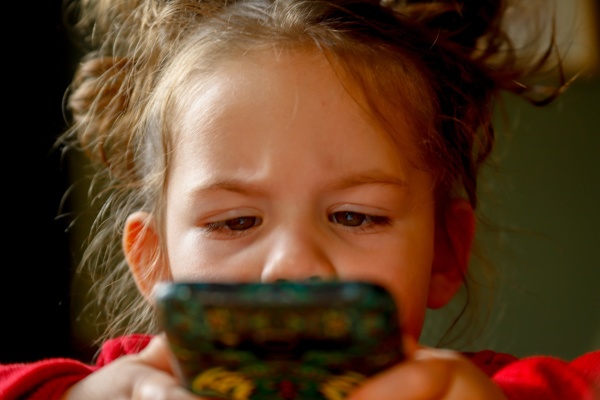
How to Introduce Technology To Your Kids From An Early Age
Author Bio: Cristin Howard runs Smart Parent Advice, a site that provides parenting advice for moms and dads. Cristin writes about all of the different ups and downs of parenting, provides solutions to common challenges, and reviews products that parents need to purchase.
Kids love technology. Why wouldn’t they?
Bright lights, moving pieces, things to push. Kids of all ages, even babies and toddlers, are reaching for technology and swiping before they can pick up a spoon.
Of course, everyone has an opinion on when is the best time to introduce technology to your children. Experts, pediatricians, your in-laws, and the neighbor next door will tell you what they think is the right time for kids to begin using phones, tablets, and televisions and what you should do.
If you’re feeling conflicted about how to introduce technology to your kids, read on for a few ideas on setting your kids up for healthy habits and future tech-savviness.
Choose the Right Time
Yes, most infants are exposed to technology right away. Parents use phones, siblings have tablets, and binge-watching during middle-of-the night feedings is a real thing. However, exposure is not the same as interaction.
The AAP guideline is to keep children’s technology interactions minimal through the age of two. For kids two and under, they are learning and exploring through play and human interaction. Any moment spent plugged in is a missed moment of experiencing the world around them.
If you can manage to hold your baby and toddler off, three year olds are more ready to begin learning and using technology, with some help.
Start Slow
Ideally, it’s best to keep all screen time (phones, tablets, and television) to under two hours a day. The guideline has less to do with adverse effects of screen time and more to do with what kids are missing while on screens.
In order to get in the proper amount of sleeping, eating, playing, and face to face interaction, you’ll need to stick to those two hours only to fit everything else in!
Be Present
For children in preschool (ages three through five) technology shouldn’t be a solitary activity. While yes, they may watch a show on their own, it’s better for parents and siblings to be with them, deepening the experience, so they get more out of it.
Young kids can learn through educational apps and programs, but they don’t remember it as well unless someone is pausing and helping to explain things as they go.
Joint technology engagement is also an opportunity to model how to use devices properly, including how to turn them off when time is up.
Encourage Active and Meaningful Use
Active use of technology is thoroughly engaging and interacting with an app or program, while passive use is more about scrolling and streaming.
Kids who use their tech time to be active will have better experiences and are more likely to learn from technology than ones who are merely consuming programming.
Things like drawing tablets, e-book apps, and digital story-telling websites encourage kids to get involved, think, and create.
Do Your Homework
There are so many “educational” apps and games out there that it’s hard to know where to begin. Even if you’re just looking for the right reading app, you’ll have hundreds of options.
Parents need to do their homework when choosing the right sites and apps for their children. Keep in mind their age, interests, and attention spans when searching for ones that will offer meaningful engagement and be a just-right fit.
Make It About Them
If you’re not all about apps, there are still ways to get your kids involved with tech.
Kids love to hear about themselves and watch their own escapades over and over again. Things such as taking pictures of your family, recording videos of dramatic play or songs, or taking photographs of artwork can be a positive way to introduce technology to your kids.
Children love to sit down and go through pictures, send pictures they drew to loved ones, or watch the fashion show they put together over and over again. These activities will allow kids to use technology and get comfortable with it without getting too involved in an app or game.
Set Limits
Tech-free zones or time periods are good practice for everyone. Maybe it’s no phones at the dinner table, or turning off screens for one hour every day, but setting aside time to live without screens is an excellent way to practice turning off devices and making sure to engage with one another in the here and now.
Be Careful Of Use
Technology is amazing and can keep kids incredibly engaged, but be wary of always using it as a tool for distraction and quiet.
If you reach for the tablet every time your child is upset or loud, then they will not learn how to deal with their emotions or regulate their behavior.
This isn’t to say you can never use technology to distract your child; it’s a good idea to not get into the habit of using it as your first go-to method for calming down.
Be A Role Model
Children are always watching, and a good way to stick to boundaries with devices is to follow your rules yourself.
Observe the tech-free zones of your house, don’t spend lots of time mindlessly scrolling in front of your children, and put your phone down when you’re talking to them.
These small choices will help your children see that screen time is not the most important thing in your house, but that people, school, and other activities come first.
The End Game
When it comes to introducing your children to technology at an early age, the most important thing is to keep in mind your ultimate goal: for your kids to grow up to be happy, healthy, and independent.
Technology isn’t going anywhere. In fact, it’s becoming an increasingly important part of our daily lives.
As parents, we need to teach our children (and ourselves) how to live with it, learn from it, and embrace it, all while not allowing it to replace our relationships with one another.
Related stories

The Top 6 Things That Interfere With Kids' Sleep
Discover the top factors that disrupt children's sleep and learn effective strategies to overcome them.

How Old Should Your Child Be Before Owning a Smartphone?
Before you give your child a smartphone, consider all of the pros and cons. If a child gets an electronic device too soon, it may cause some issues.

Responsible Parenting in the Digital World
A generation of smartphone natives, children often have unrestricted access to the internet, they experience both the countless benefits and the dangers.
If you'd like to receive the best stories from our blog, keep up to date with our progress and get notified about our product releases and special discounts.